Indian giant squirrel
After contemplating for sometime, the pair had decided to crawl slowly on the horizontal branch that was high up on a tree. One squirrel at a time coming from different directions, covering unequal distances in unequal speeds. The cute couple finally decided to halt at a place in the middle of the trunk. I had seldom come across these Indian giant squirrels (Ratufa indica maximus) or Malabar giant squirrels as they are commonly called for the ones found in the southern part of the Western ghats, descending these many layers from the tree.
Standing behind the tree at a distance only the tip of their tails were in vicinity. It is only when I was facing them, then I figured out the fact that they came for those essential minerals, the bark of the tree with loads of termites on it. After having couple of bites for whatever reason it was, one of the squirrels turned and went back to rest on the same branch from where it came mimicking the path and the speed. That means I get to spend with the other one and observe its behaviour. To my luck it stayed for more time than I anticipated.
It pulled a bark gently with its mouth and started to eat by holding with its front paws while the other two at the back were glued to the trunk. The consumption was so fast as if there is a competition for completing entire barks of all trees. And in that process few barks fell down though, never mind it moved aside and pulled few from there. All this urgency is for some additional minerals. And also because their main food which are fruits unavailable at that time.
And when they are available, what it does is carefully stroll over the branch where a bunch of fruits are available and even more carefully check each one of them for the ripe ones and pick up, again gently with its paws and eats it swiftly. The lucky seeds of those fruits which pass through the gut and all on the ground would germinate in future helping themselves as well as their friends. Once fruits in that bunch are finished, it then strolls to another branch and does the same job. This routine is followed not just for fruits but also with some mature leaves and flowers as well.
And this where its adventurous side is displayed, from casually crawling to the edge of those delicate branches to holding those ripe fruits or flowers with its front paws while hanging from the branch to making some extraordinary giant leaps from branch to branch with an incredible pace, taking help of its tail for balancing in situations like these.
Whenever I am wandering in that place, I notice them often together. Some where up in the trees, either I hear one of them making casual calls and sometimes hear sounds with high frequency bursting like an AK-47 to alert other species, or I find them resting on top of the tree with their eyes open and tails hanging from the branch. I have observed this behaviour in the Grizzled giant squirrel as well. Perhaps they are being mindful of the presence of predators. Or may be they felt its good to rest and do nothing after some hard work. And of course, who would not notice their unique reddish-maroon colour skin on the back of the body and their incredible claws. The colour of their skin as I learned differ among sub-species, that are found in different parts of the Western ghats.
I notice if one individual is sleeping the other one would be wandering in search of food. It's like as if they had an internal agreement on who shall be going for food at what time, which is usually during the early hours of the day or late in the evening. Occasionally I notice both of them strolling, smelling leaves or flowers and jumping from branch to another and sometimes darting into near by trees. They are very agile when it comes to acts like these as most branches are connected or the gap between the branches of two trees is very less in the habitat they live. Indian giant squirrels are comfortable to wander in the abode like these where they are always high up on those tall trees which gracefully give shade to the coffee plants underneath them apart from a much better environment such as the rainforest terrain and of course they are also seen rambling in other habitats as well such as deciduous, semi-deciduous, semi-evergreen but perhaps less in number.
Like many species unfortunately they are also facing threat due to a shrinking habitat. More humans are occupying the place where these squirrels prefer to live. In a way that will also be protected from raptors because of good amount of human presence. On the other hand, there shall be a shortage in the food during dry season and in that case these two individuals just like their friends might face competition from Lion-tailed macaques for the food. And these monkeys as we know are notorious.
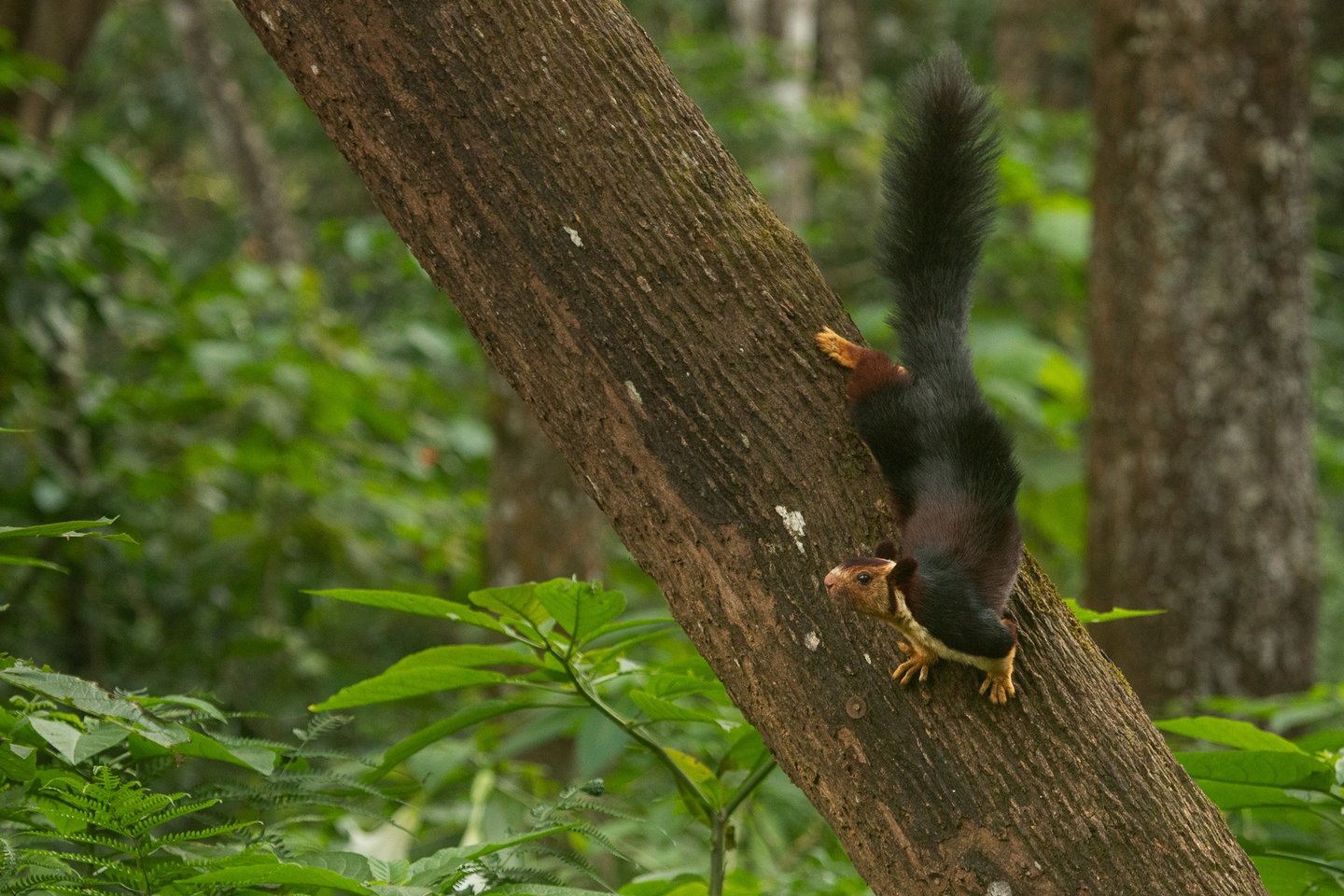

The reddish-maroon coat is a striking feature of the Indian giant squirrel so as its impressive claws
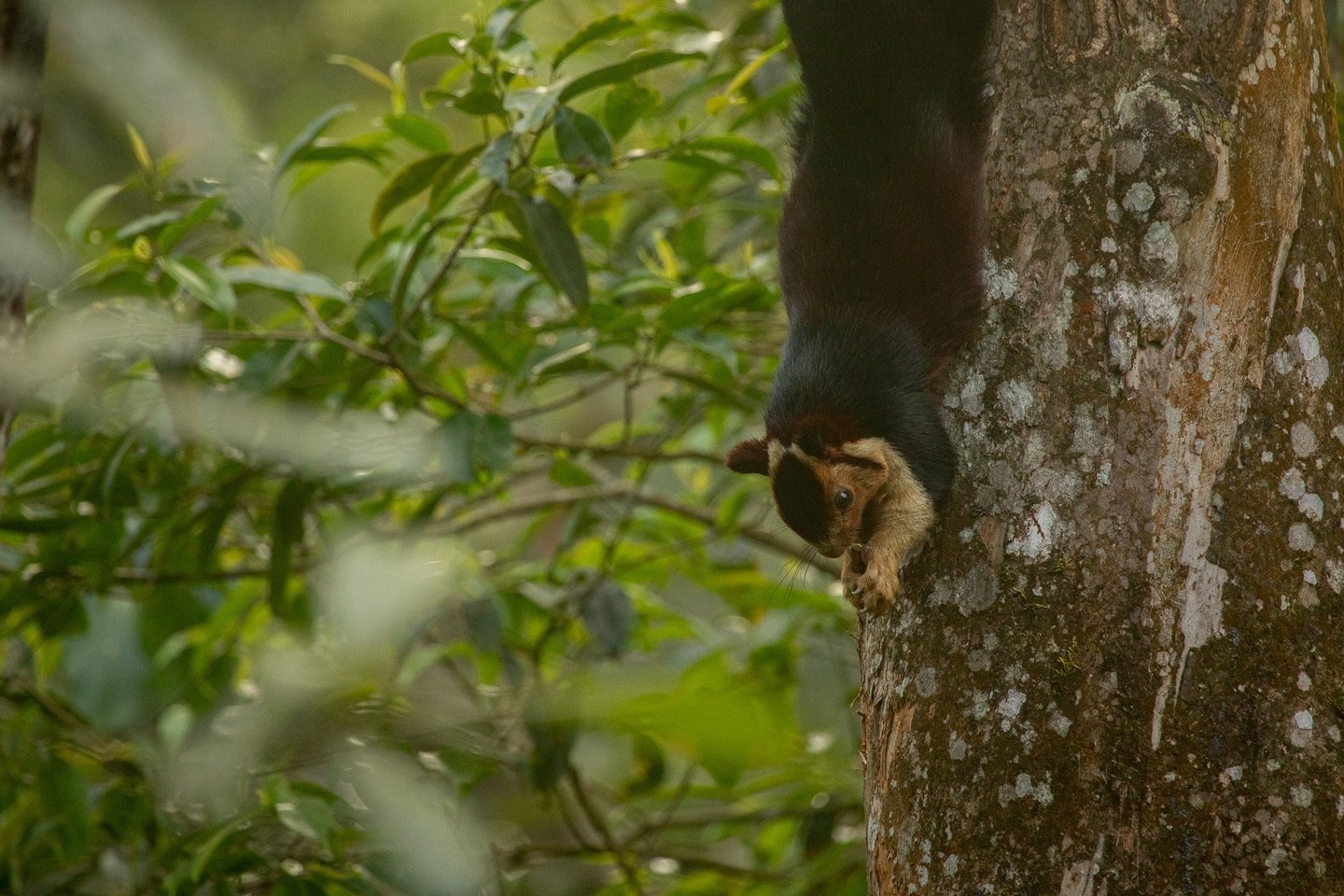

Indian giant squirrel eating bark for minerals.
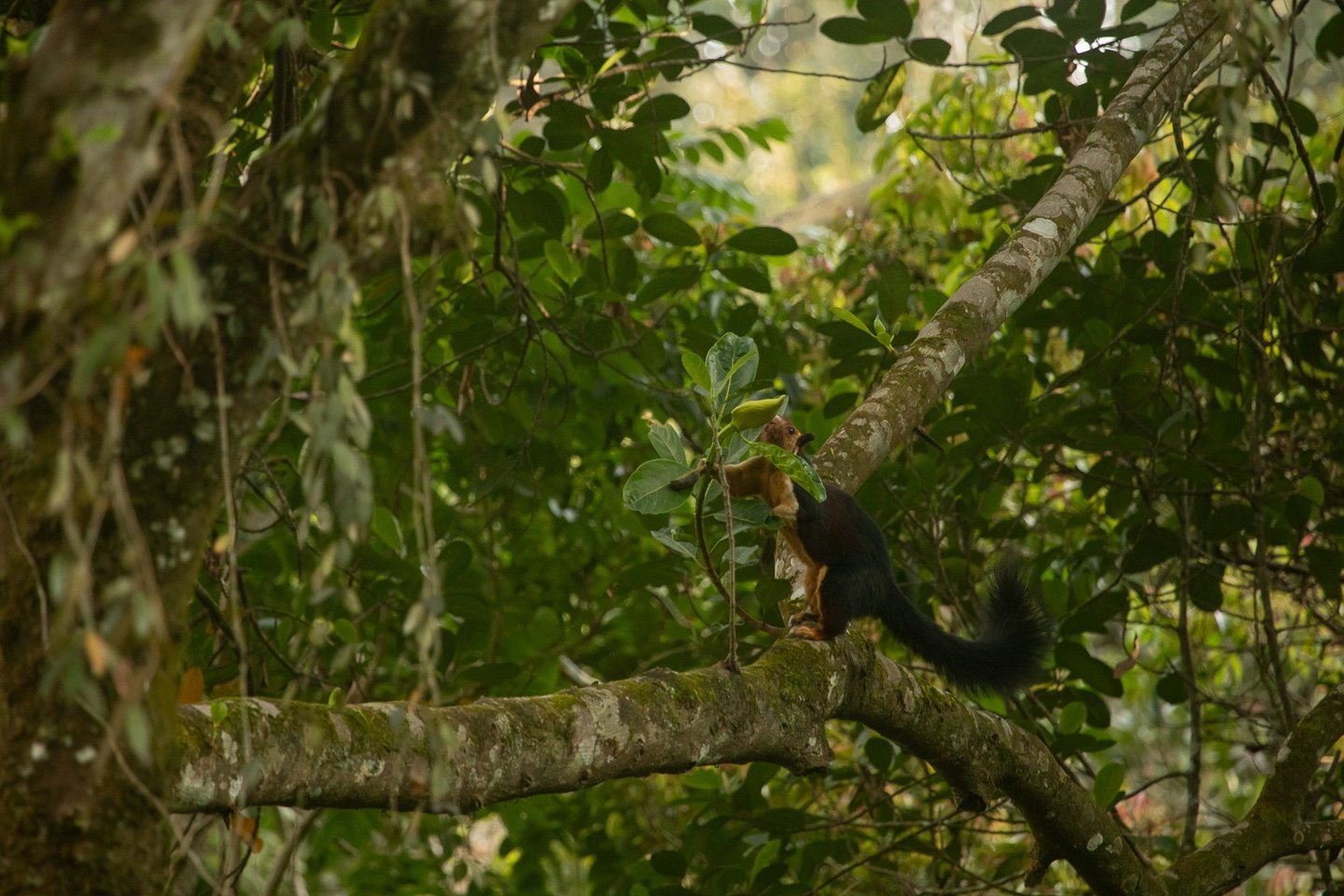

An individual is smelling the fruit for the ripeness.
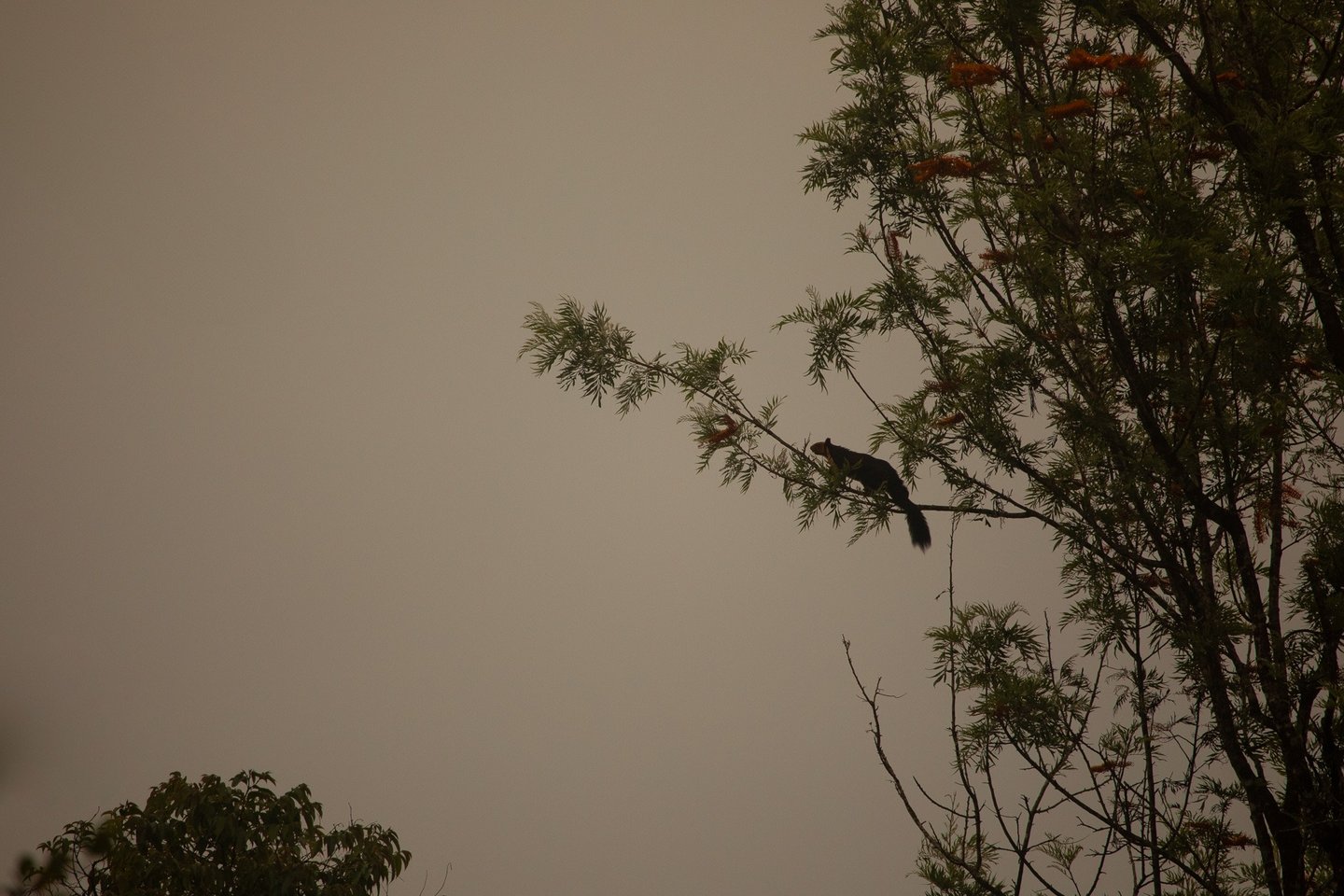

Strolling on the edge of a tree for some mature leaves or flowers
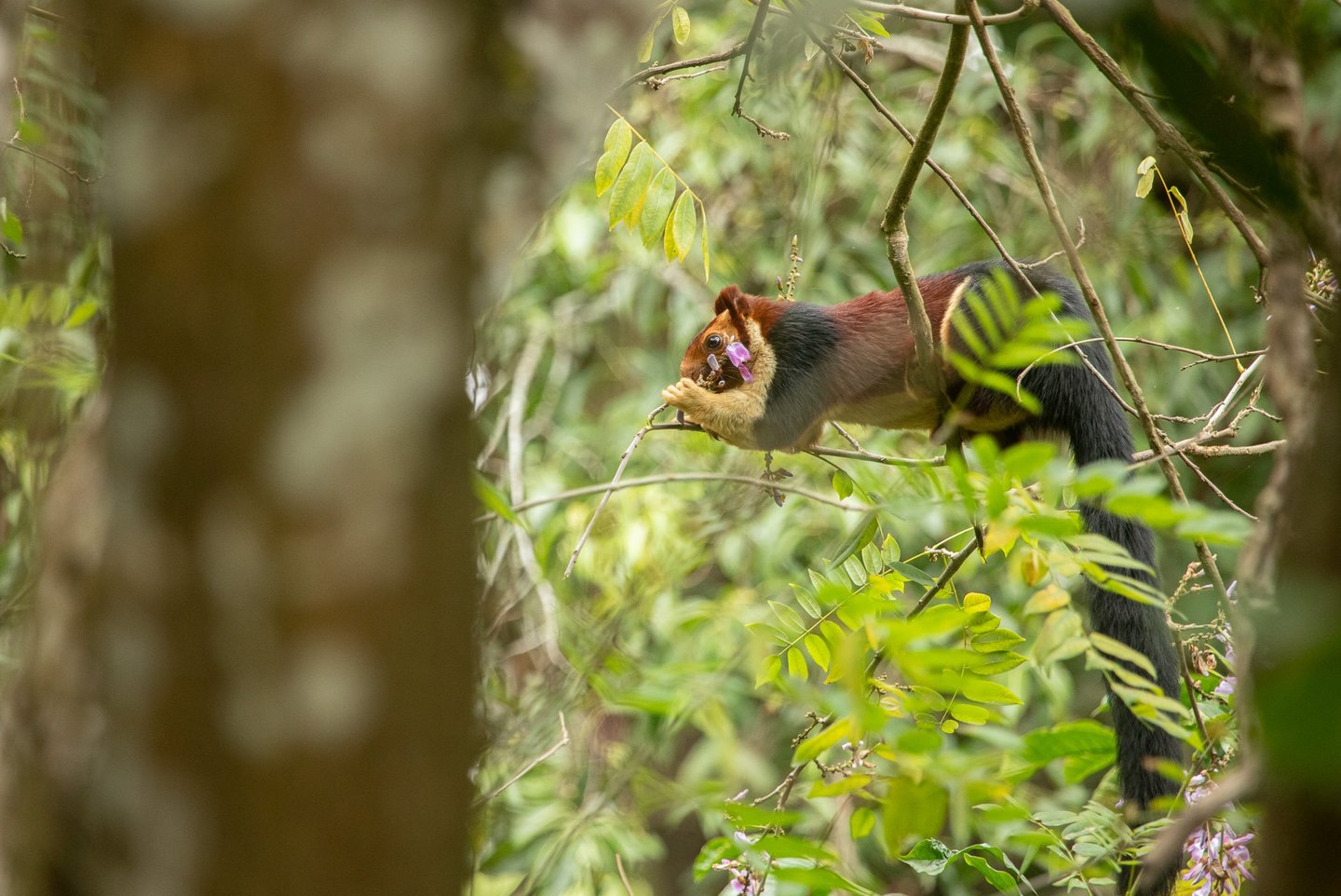

In the absence of fruits, they eat mature flowers and leaves.
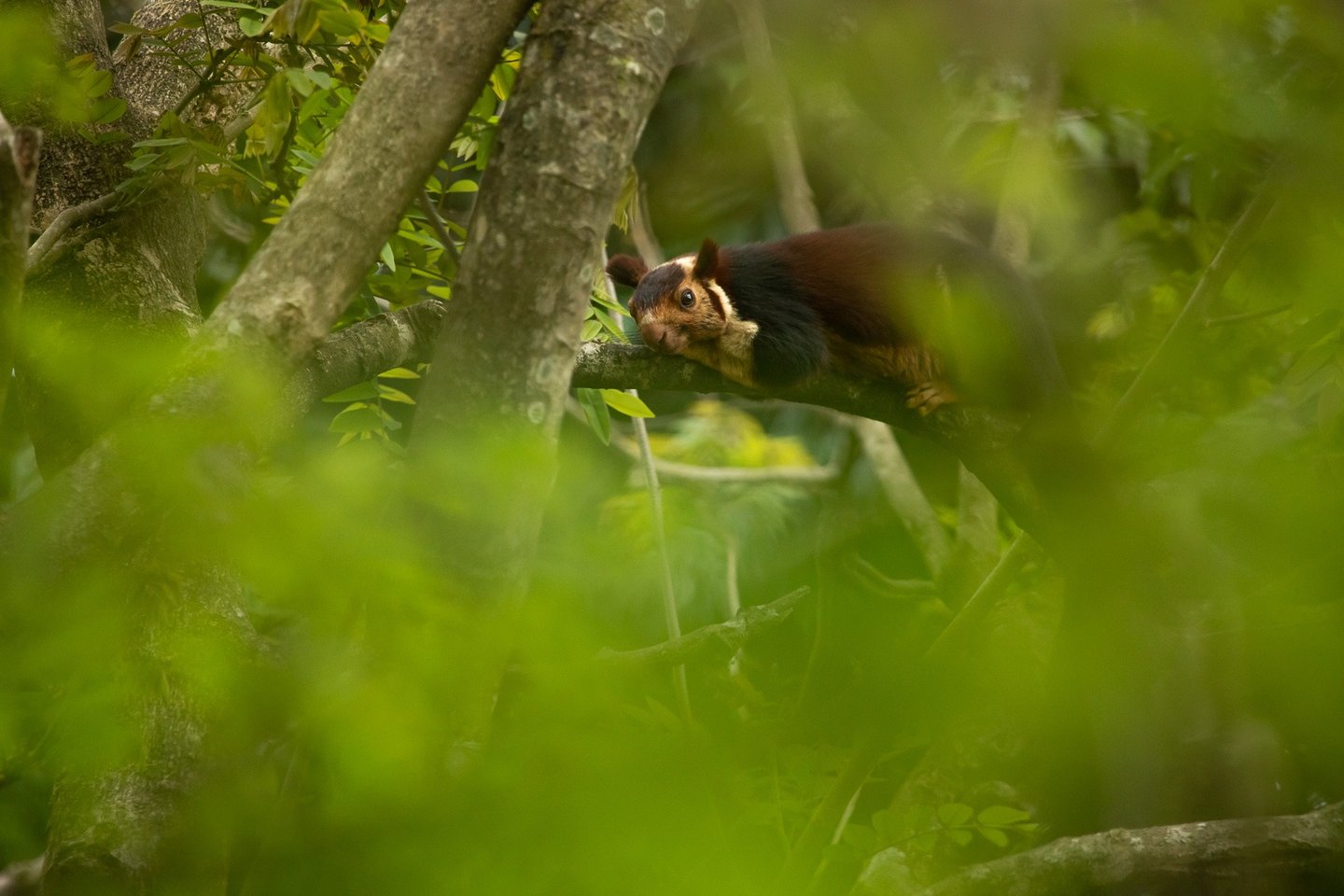

Sleeping or resting with eyes open, perhaps being alert for predators
